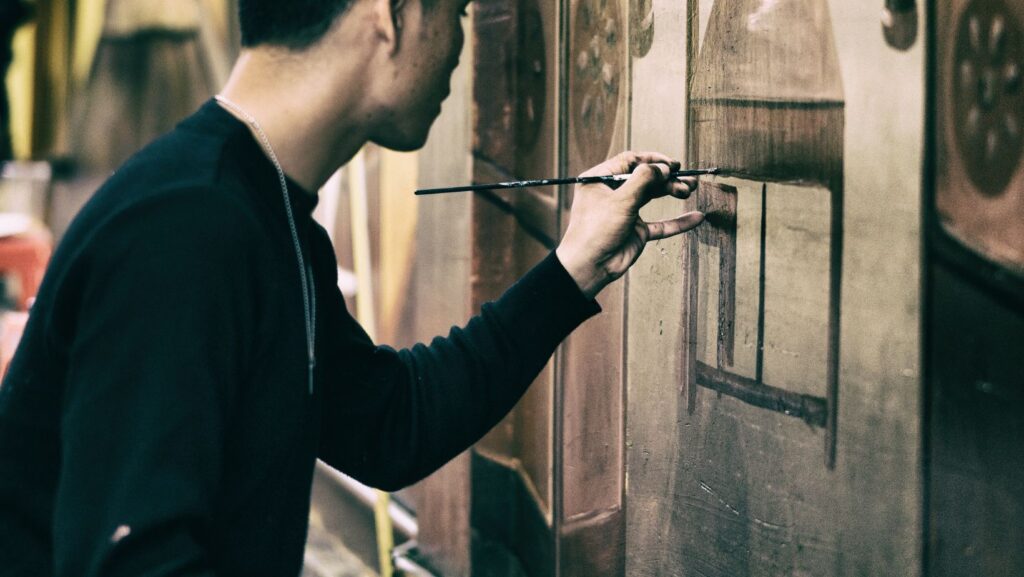The-Art-World Galleries
In the vibrant tapestry of the art world, galleries play a pivotal role in shaping cultural narratives and showcasing creative genius. These  spaces, often seen as the heartbeat of artistic expression, provide a platform for both emerging and established artists to captivate audiences with their unique visions. As gatekeepers of creativity, galleries bridge the gap between artists and art enthusiasts, offering a curated experience that both educates and inspires.
spaces, often seen as the heartbeat of artistic expression, provide a platform for both emerging and established artists to captivate audiences with their unique visions. As gatekeepers of creativity, galleries bridge the gap between artists and art enthusiasts, offering a curated experience that both educates and inspires.
Art galleries have evolved beyond mere exhibition spaces; they’ve become dynamic hubs where art lovers can engage with diverse media and styles. From contemporary installations to classical masterpieces, these venues offer an ever-changing canvas that reflects the pulse of the global art scene. As more people seek immersive cultural experiences, the allure of art galleries continues to grow, drawing in visitors eager to explore the boundaries of creativity and innovation.
Overview Of The Art World Galleries
Art galleries function as pivotal contributors within the global art ecosystem. They strategically curate exhibitions, which draw attention to diverse artistic voices from various cultural backgrounds. Many galleries, such as Gagosian and Hauser & Wirth, exhibit prominent artists, making them influential players in the market.
These establishments often operate as both spaces for contemplation and commercial enterprises. While providing a platform for artists to  gain recognition, galleries like David Zwirner Gallery also facilitate the sale of artworks, ensuring financial support for artistic endeavors. Sales agreements and contractual arrangements define these transactions, keeping the art market dynamic.
gain recognition, galleries like David Zwirner Gallery also facilitate the sale of artworks, ensuring financial support for artistic endeavors. Sales agreements and contractual arrangements define these transactions, keeping the art market dynamic.
Technology has transformed the gallery scene, broadening access through digital platforms and virtual exhibitions. This shift enables audiences worldwide to experience art beyond physical boundaries. Galleries, through their online presence, attract international art lovers who can now explore artworks from celebrated institutions like the Tate Modern or MoMA from anywhere.
In addition to exhibitions, galleries create educational programs, such as talks and workshops, to engage the community and foster appreciation for contemporary and traditional art forms. Programs at galleries like the White Cube enhance public understanding and appreciation of art, promoting cultural enrichment.
Evolution Of Art Galleries
Art galleries have undergone significant transformations, evolving from simple showcases to complex cultural phenomena. This evolution mirrors changes in artistic expression and audience engagement.
Historical Milestones
Galleries began in the 17th century as elite spaces for collectors. The Salon de Paris, established in 1737, marked a key moment as it opened exhibitions to the public. In the 19th century, establishments like the National Gallery in London and the Museum of Modern Art in New York redefined public accessibility.
Increasing independence marked another milestone. In the late 19th and early 20th centuries, galleries became platforms for avant-garde movements. Institutions like the Armory Show in 1913 introduced radical art forms to America, catalyzing shifts in public taste and understanding.
Modern Developments
Contemporary art galleries are dynamic and diverse. They integrate technology to offer digital exhibits and online sales. Virtual reality now enhances visitor experiences, making art accessible to global audiences.
Galleries embrace inclusivity by featuring diverse artists, reflecting societal changes. They act as cultural hubs, often collaborating with local communities to offer educational events. This engagement supports emerging artists and enriches public discourse on art and culture.
Cultural trends also influence gallery curation. Recent decades have seen galleries focus on sustainability, showcasing eco-conscious art and sustainable practices within the industry.
Key Players In The Art Gallery Scene
 Prominent entities significantly shape the landscape of art galleries. Recognized globally, they champion the cause of cultural enrichment through art.
Prominent entities significantly shape the landscape of art galleries. Recognized globally, they champion the cause of cultural enrichment through art.
Gagosian and Hauser & Wirth dominate with prestigious exhibitions. Gagosian operates in major cities, showcasing top-tier artists. Known for diverse presentations, Hauser & Wirth hosts exhibitions that attract art aficionados. Pace Gallery excels in contemporary works, further fueling the international art market.
Curators like Hans Ulrich Obrist innovate in exhibition curation. Ileana Sonnabend introduced influential post-war art. Artists like Yayoi Kusama and Ai Weiwei, often featured in renowned galleries, steer global art narratives. These curators and artists drive change in the art gallery scene, ensuring its dynamism and relevance.

